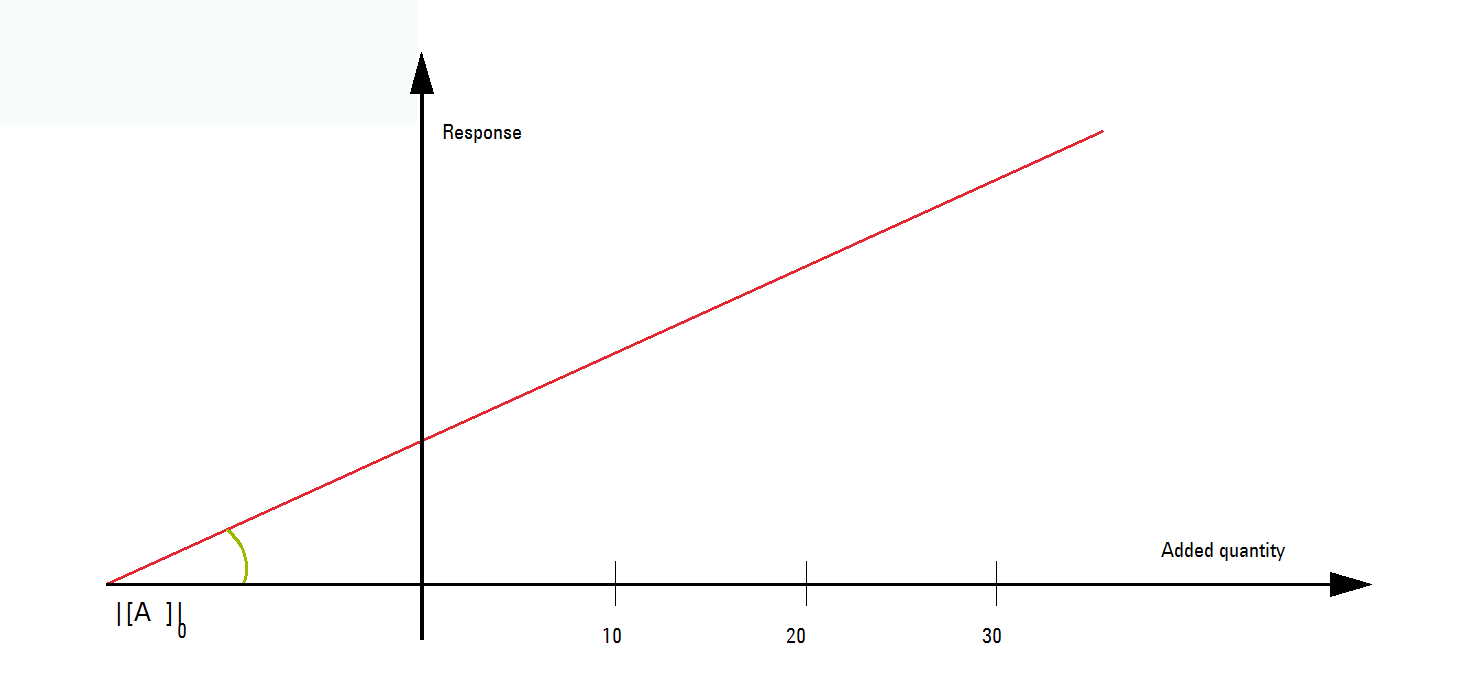Standard addition
The method of standard addition is a type of quantitative analysis approach often used in analytical chemistry whereby the standard is added directly to the aliquots of analyzed sample. This method is used in situations where sample matrix also contributes to the analytical signal, a situation known as the matrix effect, thus making it impossible to compare the analytical signal between sample and standard using the traditional calibration curve approach.
OpenLab CDS calculates the equation y=ax+b where y is the response (area or height), x is the concentration, a is the slope and b is the intercept with the response axis.
If the sample is now injected with no addition of standard, its response will be equal to b. The concentration of analyte in the original sample will be equal to the negative intercept of the line with concentration (x) axis (A0).
Knowing the slope (a) and peak response with no additions (b) this can be calculated by:
-
In External standard (ESTD), the amount is: A0 = b/a
In Internal standard (ISTD), the amount is: A0=( (b/ISTD response)/a) / ISTD amount )
